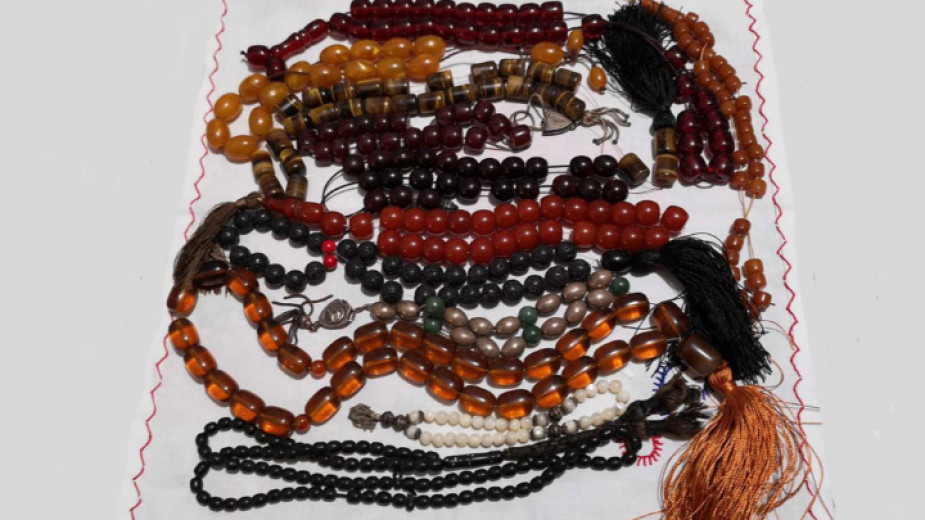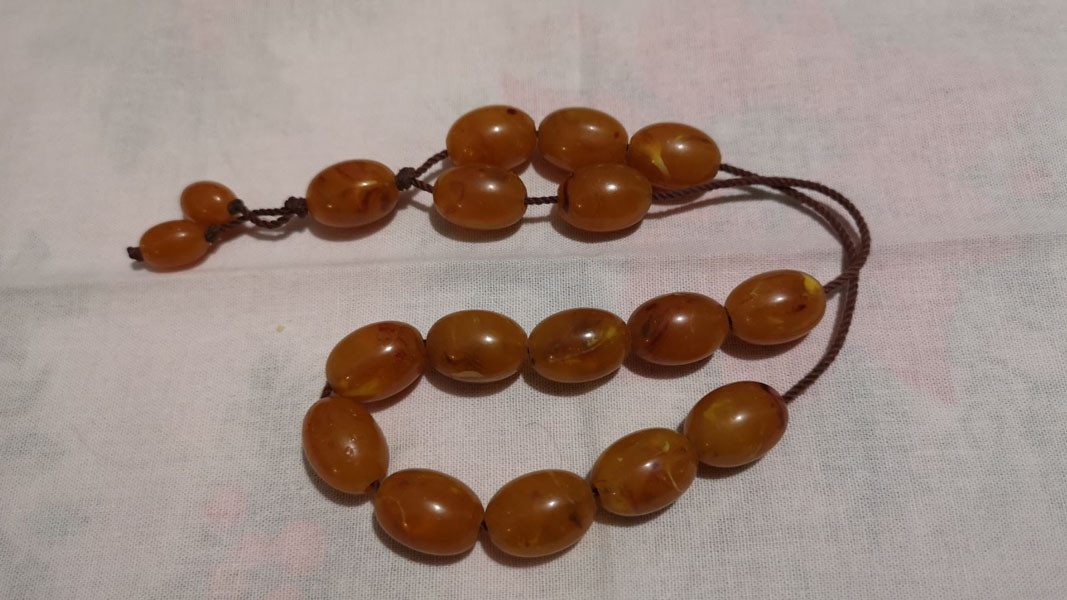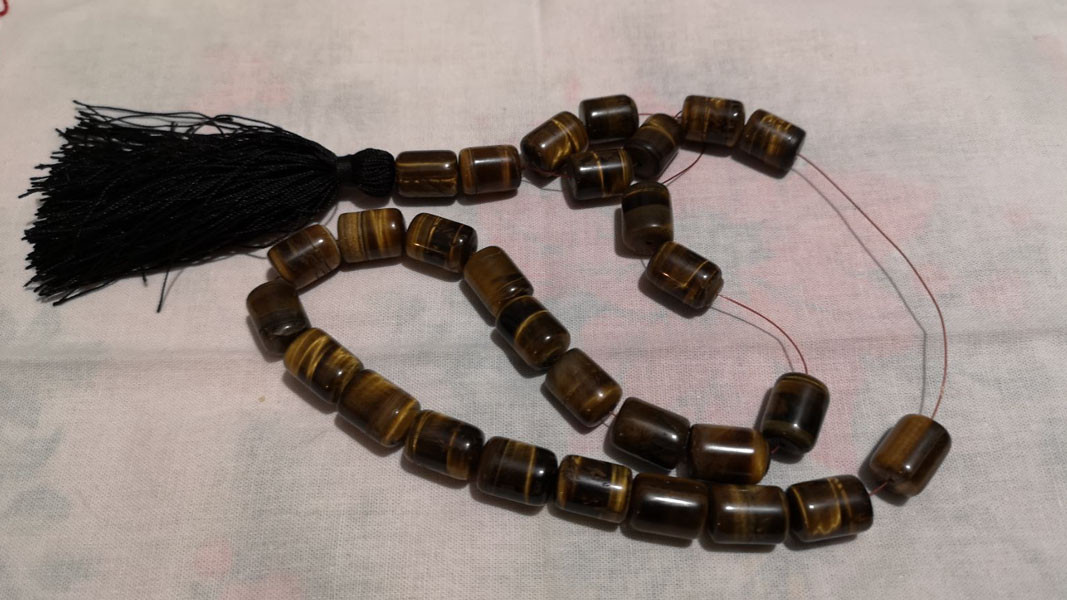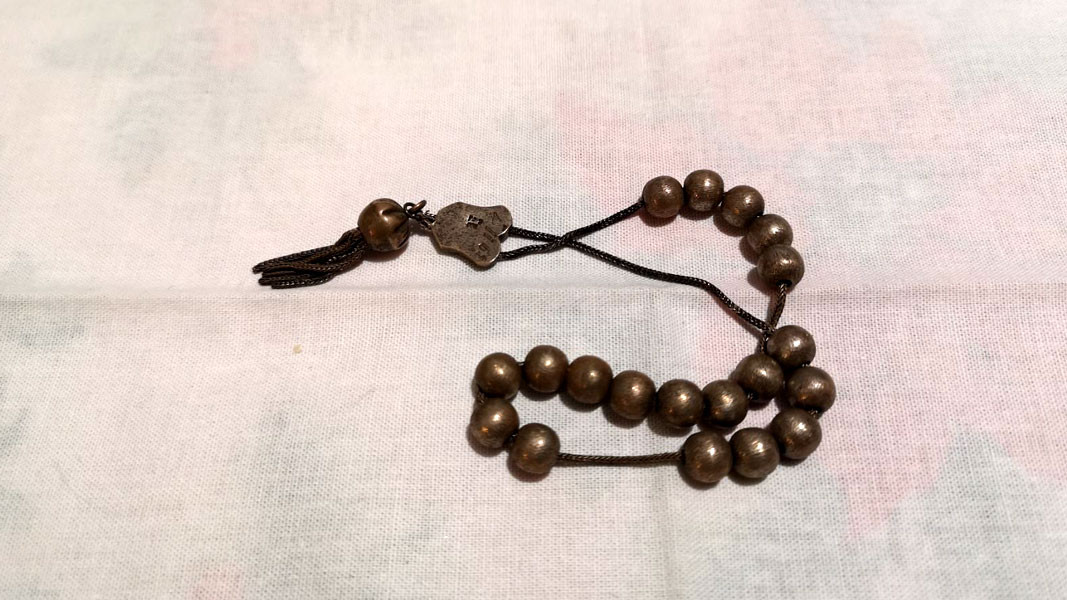 4
4
To this day it is not quite clear how long rosaries have been in existence. There are, of course, all kinds of myths. According to one a Buddhist priest told a poor, illiterate Indian that he had to say 108 prayers. But the Indian answered that he couldn’t count, so the priest made him a rosary with 108 fruit pits and told him to flip one over every time he said a prayer, says S.V. a collector from Sofia. He bought his first rosary when he was 14, and now, 50 years later, he is still adding more to his precious collection.
 Rosaries are one of the most easily recognizable attributes of any religion, used to count prayers or mantras. The most widespread kind of rosary is a woolen or silk thread with a certain number of knots, or beads made out of different materials:
Rosaries are one of the most easily recognizable attributes of any religion, used to count prayers or mantras. The most widespread kind of rosary is a woolen or silk thread with a certain number of knots, or beads made out of different materials:
Orthodox Christian rosaries which are made on Mount Athos are made of black wool. Black to show sadness that Christ has died, and wool because people were poor, the collector ways. In more recent times rosaries appeared for the rich and powerful during the time of the Ottoman Empire. These rosaries were made of amber or other precious and semi-precious stones, and were a status symbol. The most important element here was the “tail” of the rosary, it had to be long and made out of soft silk, unlike the Orthodox rosary which was black and ended in a crucifix.
 Rosaries can be made out of fruit pits, agate, tiger’s eye etc.
Rosaries can be made out of fruit pits, agate, tiger’s eye etc.
 There are silver and even gold rosaries butthey may just be a sign of vanity.
There are silver and even gold rosaries butthey may just be a sign of vanity.
 The best kinds of rosaries are made of amber and faturan. Faturan is a resin from pieces of amber, bakelite etc., dyed using brandy or red wine. For a change of colour natural dyes can be added. Unfortunately, that is a recipe that disappeared during World War II. I say “unfortunately” because when you finger the rosary, faturan absorbs the body heat and begins to give out a very pleasant fragrance. There seems to be an obsession of late – mounting a silver chain on beautiful amber rosaries. That is something that shouldn’t be done because silver actually destroys the amber as it moves, S.V. says.
The best kinds of rosaries are made of amber and faturan. Faturan is a resin from pieces of amber, bakelite etc., dyed using brandy or red wine. For a change of colour natural dyes can be added. Unfortunately, that is a recipe that disappeared during World War II. I say “unfortunately” because when you finger the rosary, faturan absorbs the body heat and begins to give out a very pleasant fragrance. There seems to be an obsession of late – mounting a silver chain on beautiful amber rosaries. That is something that shouldn’t be done because silver actually destroys the amber as it moves, S.V. says.
One of the most interesting rosaries in his collection is made out of ussuri – a species of black coral.
 I have an interesting rosary made out of African wild buffalo horn, a silver rosary from my father and several rosaries with different kinds of beads – silver, agate and onyx, another one made of mother-of-pearl, which I bought in Ohrid.
I have an interesting rosary made out of African wild buffalo horn, a silver rosary from my father and several rosaries with different kinds of beads – silver, agate and onyx, another one made of mother-of-pearl, which I bought in Ohrid.
 The rosary I love most is made of yellow marbles, nothing special, but I like it because it looks very ancient, the collector admits, and adds that in our day rosaries are used as a fashion accessory, or to counter stress, for concentration or to calm the nerves. I always carry in my pocket a small rosary with 8 beads. And when I am thinking about something or I am tired, I finger the beads.
The rosary I love most is made of yellow marbles, nothing special, but I like it because it looks very ancient, the collector admits, and adds that in our day rosaries are used as a fashion accessory, or to counter stress, for concentration or to calm the nerves. I always carry in my pocket a small rosary with 8 beads. And when I am thinking about something or I am tired, I finger the beads.
In Bulgaria, unlike Greece or Macedonia, rosaries are not so popular and there are no specialized rosary shops. It is rare to find something that will catch my eye and make my heart flutter. If it does not there is no point in buying it, the collector says.
Does one need to be religious to own a rosary?
That might have been so once, but no longer. I have a collection of rosaries and I am an atheist. One has nothing to do with the other. The important thing is whether you like it, whether it does something for you, whether it has a calming effect. That is what matters.
Photos: private library
Students and teachers from two educational companies of the National Commerce and Banking High School won awards at the global business competition Youth Business Summit 2025 – US , organized by the US Headquarters of Educational Enterprises, the..
Is it possible that "Virtues and Religions" will be included in the curriculum and will be mandatory from 2026? This is a debate that has seen different points of view expressed in the last few weeks. "The introduction of mandatory..
A unique creative workshop "A Small Seed of Kindness" will open its doors on Palm Sunday, and its place is even more special - Garden "Inspiration" in the town of Bozhurishte near the Bulgarian capital. "I love coming here. Look at the smiles of..
International Labor Day on May 1 in the mass consciousness of Bulgarians is often associated with the period of socialism and the grandiose demonstrations..
This evening, at 6pm, a prayer service will be held in the courtyard of the Great Basilica, followed by a festive concert dedicated to the 1160th..

+359 2 9336 661
